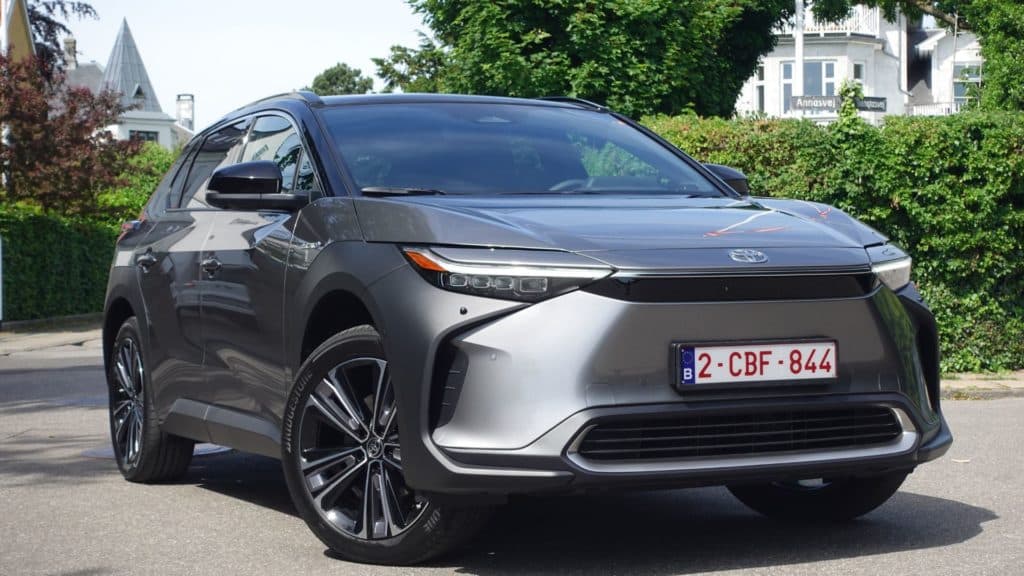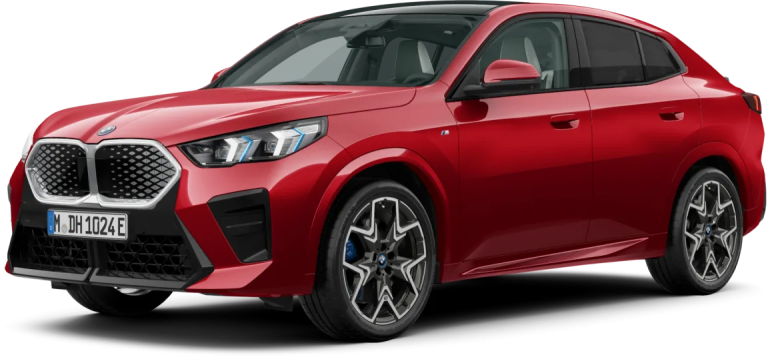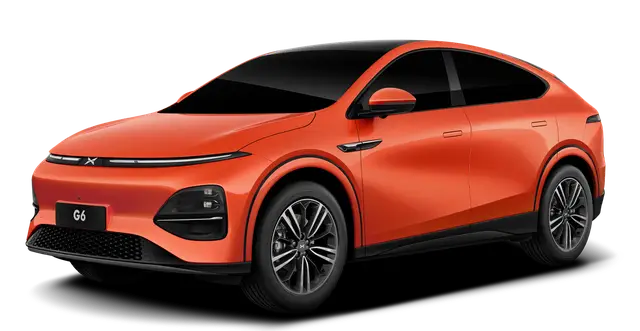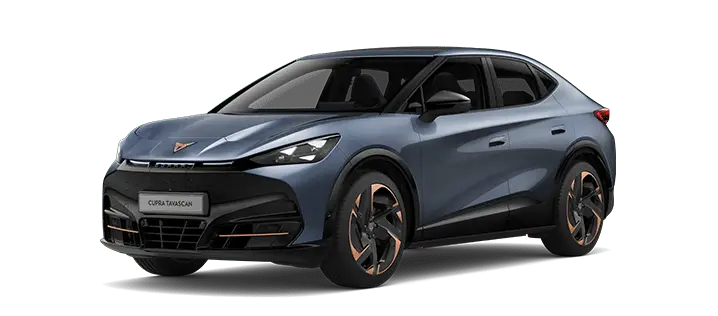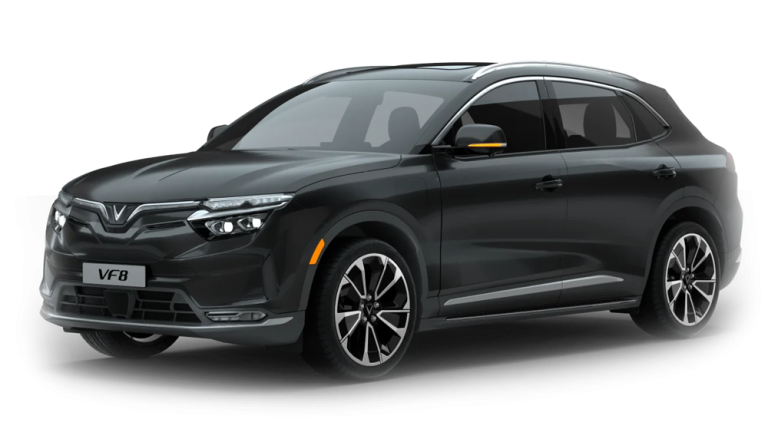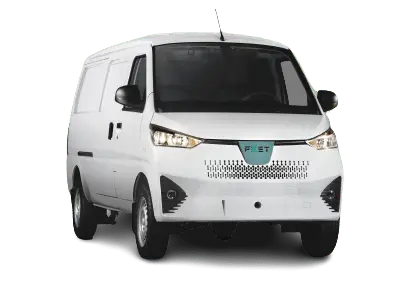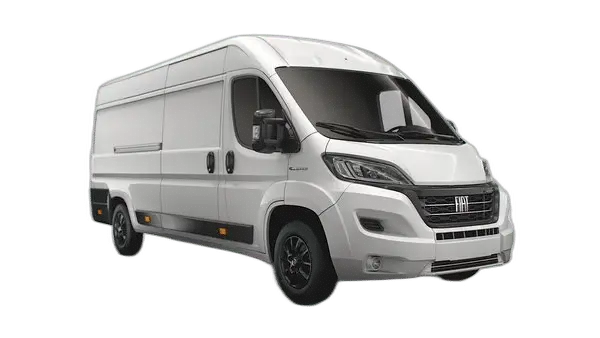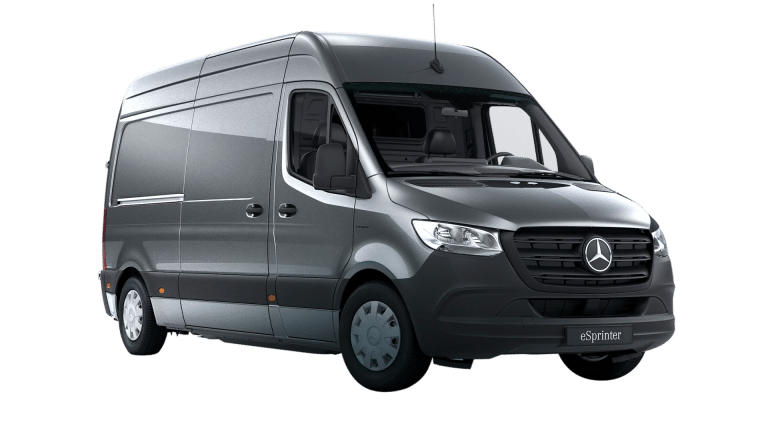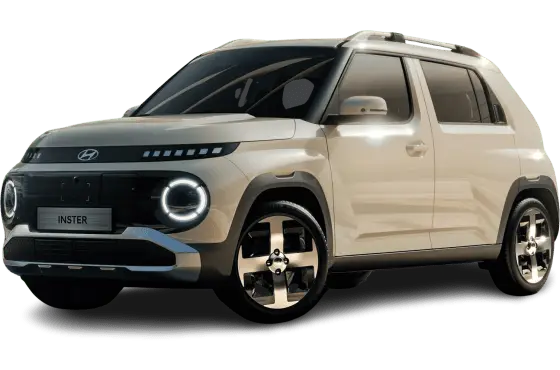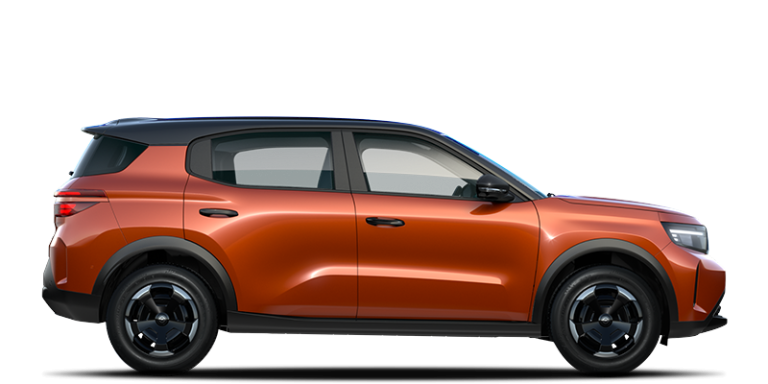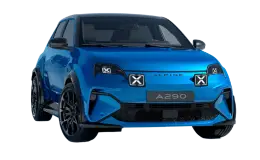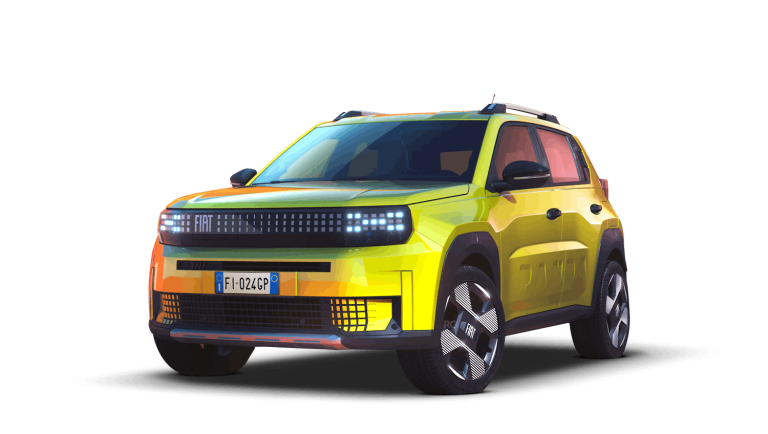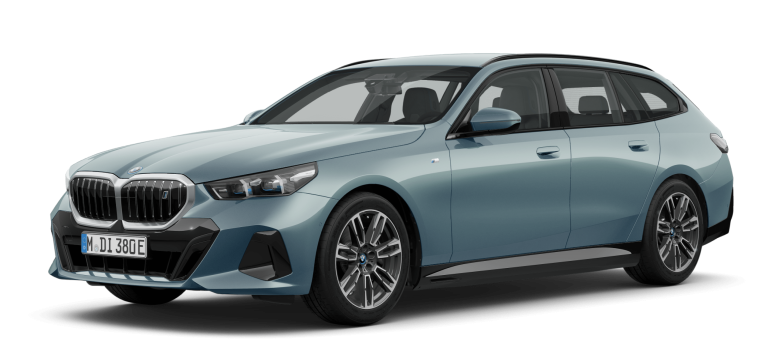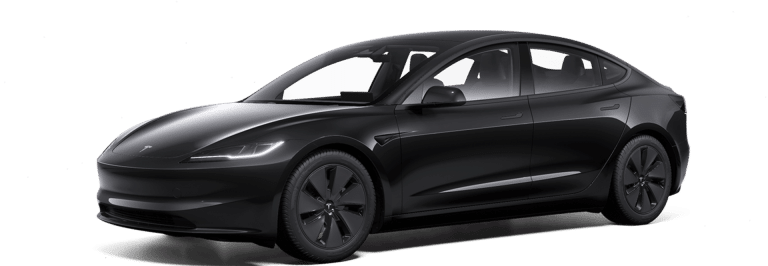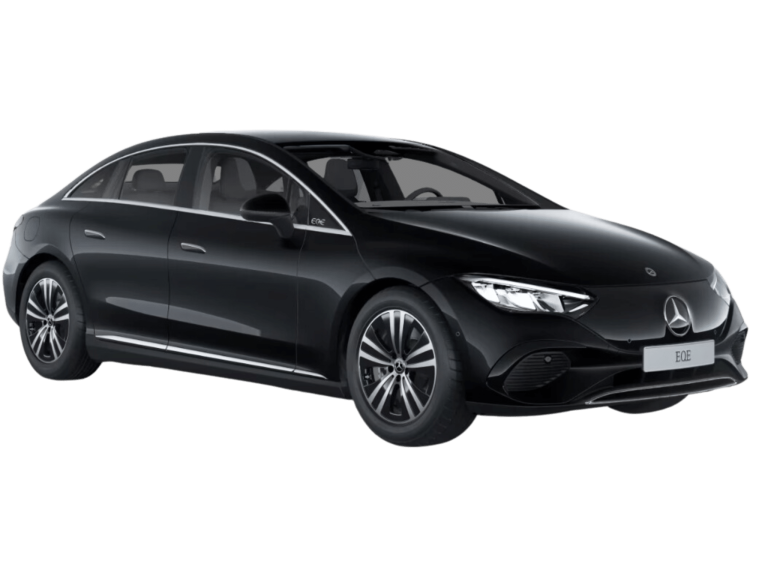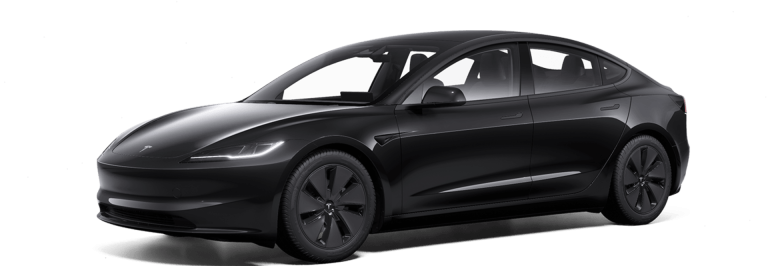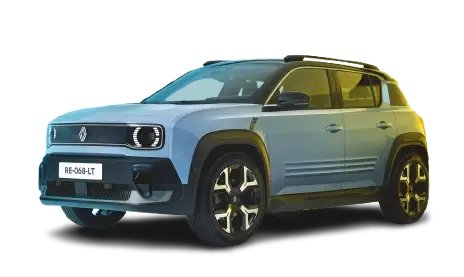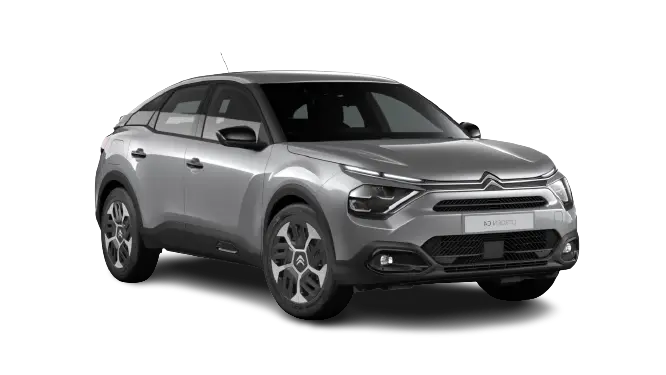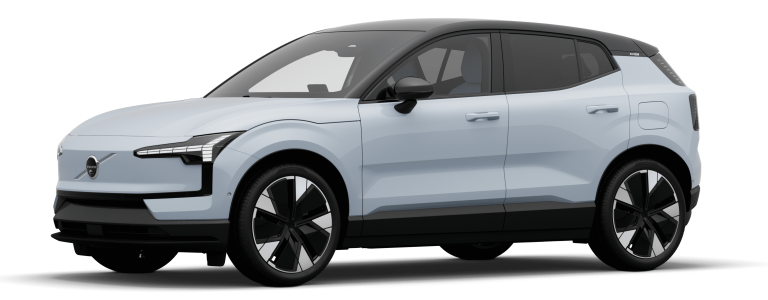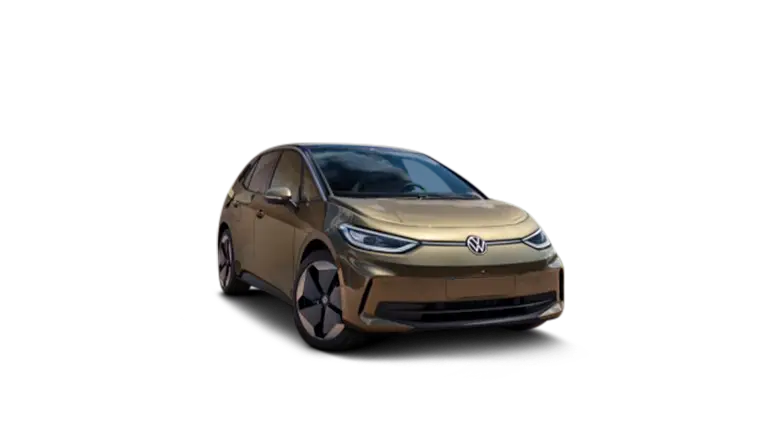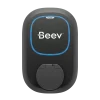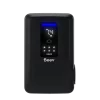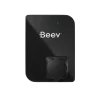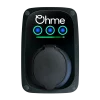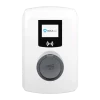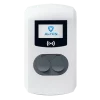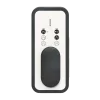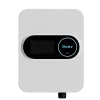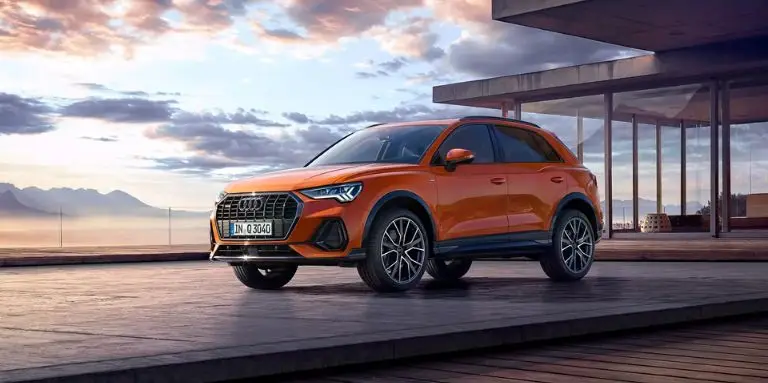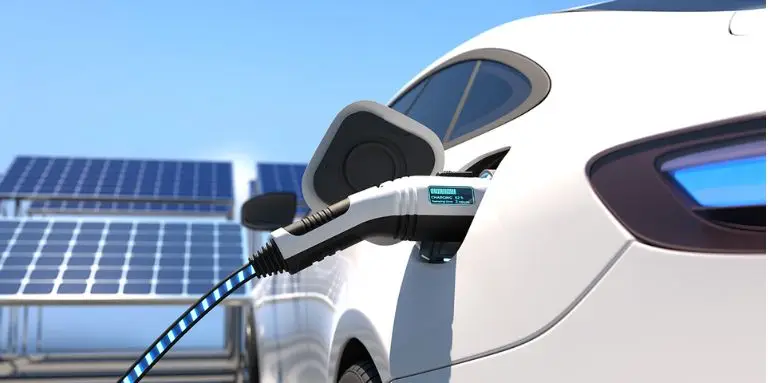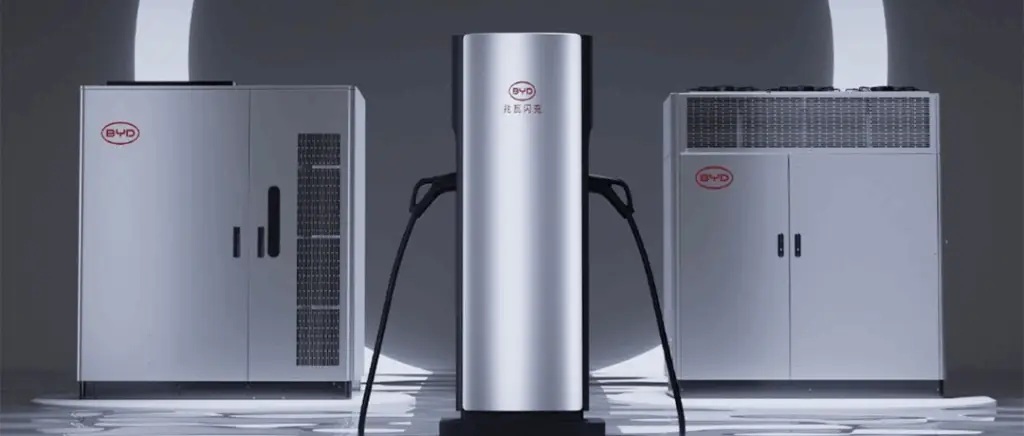100% electric, 100% convinced?
A forerunner in hybrid vehicles with the launch of the Prius in 1997 and in hydrogen with the Mirai in 2014, Toyota was quick to show its interest in alternative propulsion methods. Lexus, Toyota's high-end division, already has a 100% electric vehicle in its range, the Lexus 300e. Lexus also presented its counterpart to the new Toyota bZ4X, the Lexus RZ 450e. Based on the same technical platform, it should nevertheless feature a more powerful powertrain.
If the switch to electric vehicles will be mandatory for all automakers from 2035 onwardsToyota does not feel particularly constrained by current regulations. In fact, thanks to its large fleet of hybrid cars, the Japanese brand is one of the best performers in terms of CO2 emissions.
So the hybrid specialist took its time unveiling its 100% electric strategy, starting with the new Toyota bZ4X. This is the first in a line of vehicles under the name ''bZ'' for Beyond Zero. More than a range of vehicles, it's a new philosophy that Toyota is adopting, with a strong CSR focus. However, this range launches with a family SUV measuring 4.69m in length, a very large format that is sure to provoke reactions from climate advocates.
Let's take a moment to explain the name of this new Toyota, leaving behind classic names like Aygo, Yaris and Corolla. The new Toyota bZ4X has a name as brutal as its design edges. A tortured design, not uncommon on modern Toyotas, that almost makes it seem like a concept car. If there's one thing that really sets this new Japanese SUV apart, it's its design. We'll see in the rest of the review that Toyota hasn't lost a grain of its seriousness when it comes to other aspects of the vehicle.
bZ a growing range
bZ4X therefore designates the bZ range of vehicles, then the 4 gives us information on the vehicle's format, which in this case is close to that of a RAV4, and the X is there to emphasize the SUV aspect of the vehicle. We can therefore imagine future bZ3s, bZ2Xs or even bZ5Ls. Names that sound more like engineering project references than real car names.
While Toyota hopes to sell 50% electric cars by 2030, ambitions for the bZ4X are almost confidential, with a target of 3,000 units per year. By way of context, Toyota currently has a market share of over 5% market share with over 100,000 cars sold by 2020. While sales ambitions are low, range development ambitions are high, with the announcement of the launch of 30 100% electric models by 2030. between Toyota and Lexus.
Toyota maintains a strong Japanese DNA with its new SUV. The watchword is "Kanzen", peace of mind. Toyota wants to offer a complete experience around its new electric vehicle. The company is offering the Beyond Zero Academy, a course designed to help you learn how to drive your electric vehicle better and get the most out of its performance. This course will be offered directly at the dealership, when the vehicle is purchased.
What's Toyota's new electric platform?
Let's start with the platform of this new Toyota bZ4X. The market trend has not escaped the Japanese automaker, which has chosen to launch its range with an SUV. Toyota's new offering is therefore positioned in a segment that is already well catered for. To stand out in the 100% electric SUV market, the bZ4X features a new platform designed for electric vehicles. Called e-TNGA (electric - Toyota New Global Architecture), this platform looks on paper very similar to the various electric platforms we already know. The design resembles that of a skateboard, with the battery in the floor surrounded by the two undercarriages on which the motors can be positioned, in its basic version.
However, the engine is located at the front, where more and more manufacturers are opting for rear-engine placement. This would enable the bZ4X to offer driving performance similar to that of more traditional vehicles, so as not to disorientate Toyota drivers too much. It's an intriguing choice, since we know that automakers - and this is also the case for Toyota - seek customers from other brands for their electric vehicles. One might therefore have imagined Toyota reinventing itself with its new electric offering. But Toyota, the world's leading automaker, chose instead to stay true to its values without reinventing the wheel. Rather than trying to position itself as a leader in innovation, Toyota has chosen to take a successful formula and proven technologies and build on them. Innovate rather than revolutionize.
Rugged exterior design
To set itself apart from its competitors, Toyota has opted for a rugged design. The ground clearance is raised to 17.7 cm to underline the SUV's off-road capabilities. The bZ4X's off-road capabilities, co-developed with Subaru, another Japanese brand renowned for its rally cars, are a key point of differentiation. It's in this spirit of adventure that the design was conceived. These include large wheel arches and plastic rocker panels. The plastic allows the wheels the standard 18-inch wheels. To get the 20-inch wheels of our test version, you'll need to opt for the highest trim level. This is not a recommended choice, as they reducerange by around 40 km. Toyota is well aware of this, and offers an Autonomy Pack that consists mainly of a return to the basic 18-inch wheels. This pack also adds a small solar roof that will save a few kilometers. The headlamp line is also very horizontal, making the vehicle appear less tall than it actually is.
To stand out from the Subaru Solterra, its alter-ego, the front headlamps receive an additional plastic cover in the hood extension. The grille is also much smoother on the Toyota model. This gives the a more modern look than the Solterra which has additional headlamps in the lower body to underline its adventurous vocation. Under the hood, Toyota has installed a strip of shiny black plastic to conceal the front camera used in the 360-degree vision system. Surprisingly, this camera is not centered, a defect also found on the rearview camera. It may seem a little trivial, but this peculiarity is visible in use, even though the cameras have very good definition.
Pronounced lines
The charging port is located on the side of the vehicle, straddling the plastic wheel-arch insert and the bodywork. Toyota's aim here is not to break design lines, but to reduce the length of the high-voltage cables between the charging port and the battery, with a view to reducing costs and simplifying the platform.
The rear is perhaps the most successful part of this bZ4X. We start with the spoiler at the top of the rear windshield, which breaks up the flatness of the windshield without wipers and the rear fenders. At the bottom of the rear window, there's also a small spoiler mounted above a strip of light that runs the full width of the vehicle. Toyota has followed the trend with this design feature, which is increasingly found on new vehicles. On either side of this LED bar are the headlights, which extend to form an "X". In contrast to the front lights, the rear lights adopt a design that appears to protrude. They attempt a pixelated effect, but this is not as successful as that of the IONIQ 5.
Toyota remains eccentric with the placement of the logos, which are not aligned. While the name bZ4X can be found at the top left of the trunk, the right-hand side remains empty, as it is reserved for limited editions. Finally, one floor lower, but still on the trunk, we find the AWD logo on 4-wheel-drive versions. This rather original two-tiered layout is the only eccentricity to be found on an otherwise serious design. Finally, at the bottom of the body, a large plastic diffuser completes the vehicle's appearance and once again contributes to its adventurous design.
Beev offers multi-brand 100% electric vehicles at the best prices, as well as recharging solutions.
Inside, a very Japanese spirit
Once you've settled aboard the bZ4X, you'll quickly feel at home in the Japanese manufacturer's world. The driving position is widely adjustable, with a power-adjustable seat on our test version. Toyota has created a real cockpit around the driver, an effect which is underlined by the yoke steering wheel which is reminiscent of an aircraft control stick. As the cockpit is designed for this type of steering wheel, it poses a major ergonomic problem when compared with a more traditional round steering wheel. For those less than 1.70 m tall, the view of the speedometer can be blocked by the top of the steering wheel. Despite being positioned far enough away and directly under the windshield, the speedometer is easily hidden by the steering wheel.
You'll need to adjust your riding position very high up so as not to be disturbed. On both sides of the speedometer display, large plastic parts contribute to the cockpit effect, creating a kind of funnel that draws the eye towards the speedometer. The design is, however, a little busy, with large, low-quality plastic parts. The same criticism applies to the entire interior. Indeed, many different plastics rub shoulders, in different colors and materials. This gives the impression that Toyota has assembled its car from a catalog of available parts, and that not enough effort has been made to harmonize the quality of specific plastics, even if this may not be the best.
A low-quality plastic jungle
The disappointment continues with shiny black plastic inserts on the center console and window mounts, the two places where you're likely to put your arms and hands and leave a trail. The steering wheel, while not beautiful, has the merit of being functional, with shortcuts to cruise control and media control. And it's a comment that's often made: you get the impression that Toyota's engineers carry more weight than its designers. They don't necessarily aim for beauty, but for functionality and ease of use. functional and easy to use. This is a quality that is quite common to Toyota, and has perhaps enabled it to become the world's leading manufacturer. That and the reliability of these vehicles, but more on that later.
As I was saying, the center console is made of piano black, a material that tends to quickly become a magnet for fingerprints. There's also a rotary gear selector, the only rotary knob on this car. In fact, the temperature is controlled by buttons that can be raised or lowered, and the volume can be adjusted by push-buttons. 3 levels, 3 different ways of adjusting your car. Toyota has also succumbed to the trend for haptic feedback buttons to adjust the functions of the heating/air-conditioning system and heated seats.
Ergonomics first!
These buttons are mounted on a 12.3" diagonal screen on our test version. To accommodate this long screen, the center console is not symmetrical, with a protrusion on the right-hand side. Finally, nothing is aligned on this center console, which is a little disturbing. The center console is deformed to accommodate a large 12.3" screen. This will also be available in a version closer to 10 inches. The question then arises as to its positioning, which is bound to be a little awkward.
Underneath the center console, there's a practical storage area, as well as 2 USB-C charging ports. This space is complemented by another storage area under the armrest. These spaces are important, since Toyota has dispensed with the glove compartment, so there's nowhere obvious to put the car manual or, if you're still using the paper versions of these documents, the accident report.
A new screen with a modern interface
This screen is equipped with a new system, Toyota Smart Connect. The screen is well made and very responsive. Everything you'd expect from an infotainment system in 2022. However, some menus are still a little empty, a sign of the system's youth. It is of course compatible with Android Auto and Apple Carplay so you can connect your phone, even wirelessly, to your favorite interface. If the system seems responsive, we imagine that most users will instinctively connect their phones.
The upper part of the dashboard is made of a synthetic fabric-like material, which, although visually quite successful, is not to be found to the touch. Still, it's an appreciable choice that creates a bit of a break in an otherwise dark interior made up of different layers of plastic.
A noteworthy feature is the JBL audio system audio system, which is quite good, in line with the segment average. The upgraded audio system includes a subwoofer in the trunk, but this is set far too low in its factory settings. However, you can adjust the equalizer to your preference in the audio menu, giving the bass a little more punch.
Remarkable legroom
It's surprising how much space is available on board. Even when the passenger seat is moved all the way back, there's still plenty of legroom for the passenger behind, a remarkable optimization of on-board space. Toyota is well aware of this, and claims that this is quite simply the most livable vehicle in the Japanese manufacturer's entire range. The bZ4X has a wheelbase (i.e., the space between the front and rear wheels) of 2850 mm, a good value without being king in its class. The Jaguar I-Pace, for example, has a wheelbase of 2990 mm, offering even greater habitability. All in all, this is a vehicle with ample interior space for family use. Thanks to its electric platform, the bZ4X has a flat floor in the rear, or so we thought before sitting down.
To meet off-road requirements, Toyota had no choice but to reassemble certain components, creating a very slight transmission column of around 5 mm. To hide this, thick floor mats are installed at the rear to smooth the floor. Another detail to note is that, unlike its German competitors, the bZ4X is not equipped with a ski hatch - a pity for a vehicle that claims to be adventurous, with driving modes designed for snow. However, it is still possible to lower the rear seat to carry longer objects.
A practical everyday trunk, but not so big
The latter has a capacity of 452 liters (441 with the subwoofer), a respectable amount of space that will be sufficient for the whole family's luggage. It's less than some of its competitors, but sufficient for most uses. The RAV4 and Skoda Enyaq come to mind, both offering approximately 580 liters of cargo space. Beware, however, that the SUV's coupé design has an even greater impact on cargo space. On a positive note a double bottom wide enough to accommodate charging cablesToyota has chosen to supply the bZ4X as standard with a Type 2 cable for recharging at charging points, and a domestic cable for occasional recharging if you need to use a normal overnight socket to tide you over. The trunk opening is also very practical to use, with a wide opening and a low loading sill, making daily use of this vehicle a breeze.
Another detail that many people will appreciate is that the Toyota bZ4X is approved to tow up to 750 kg.
On the road it's serious
We took the Toyota bZ4X for a fifty-kilometer loop around Copenhagen, enough to get a good first impression of the vehicle and its capabilities, but too short to verify the vehicle's range and recharging speed claims. Toyota has developed a new platform for its 100% electric vehicle. All the advantages common to electric vehicles are there: a fairly low center of gravity, good chassis rigidity aided by the battery pack, which becomes almost structural without reaching the level of integration of a Tesla Model Y, for example. Advantages that Toyota has seized upon. We had the 4-wheel drive version of the bZ4X at our disposal (it's also available with front-wheel drive), and we were never worried about running out of power when overtaking, in fact the experience was quite pleasant.
Under hard acceleration, there's a slight rearward body movement as weight is transferred to the rear, but the handling remains very sound indeed. This is due to the vehicle's SUV size and good ground clearance. good ground clearance which makes it easy to overcome obstacles. On the road, behavior is very serious, the vehicle lives up to its family vocation, there are no surprises and it's hard to fault it. The suspensions are very well tunedThis is surprising for an SUV of this size. The feel is really good, and Toyota has drawn on its experience with electric hybrids to fine-tune the bZ4X's electric motor(s).
Feeling at home in the Toyota bZ4X
There's no question here of going for lap times, as the vehicle isn't designed for that, and in fact the difference in power is very slight between the front-wheel drive version (204 hp) and the 2-motor, 4-wheel drive version (218 hp). What's not gained in horsepower is gained in torque, 266->337 Nm, enabling the 0-100 to be accelerated in under 7 seconds, compared with 7.5 seconds for the single-engine version. Having a second engine, however, comes at a significant cost in terms of range. While the front-wheel-drive version can cover up to 513 km, the 4-wheel-drive version tops out at 470 km according to the WLTP standard. Add to this all the options and, above all, the 20-inch wheels, and the range can drop to just 411 km.
However, these kilometers will be covered in great comfort thanks to the suspension, which offers good filtration, and also to the particularly good soundproofing.soundproofing.. It's only from 120 km/h onwards that aerodynamic noises start to appear in the front pillars, probably due to the imposing rear-view mirrors. When it comes to braking, there's a darker side to the picture: regenerative braking. Electric vehicles can recharge part of their battery during braking and deceleration. On the bZ4X, two modes are available: a freewheel mode, in which the vehicle continues to coast, and a "one-pedal" mode, in which the vehicle brakes as soon as the accelerator pedal is released, which should make it possible to drive with only the accelerator pedal under control.
Insufficient regenerative braking
However, this was without taking into account the very low setting of the one-pedal mode. Unlike most other vehicles, regenerative braking doesn't increase with speed, and on this Toyota it's set to offer a fairly constant braking force. The problem is that this setting is too low, with no possibility for the driver to adjust it. We would have preferred to see a pedal system on the steering wheel, allowing the regenerative braking to be adjusted according to the driver's preferences. After all, some people like the sensation of regenerative braking more than others. Nevertheless, it's undeniable that more powerful regenerative braking allows you to regain more autonomy, as it will be useful in a wider range of situations.
Charging, good but no more than that
Although the Toyota bZ4X does not feature powerful regenerative braking, it should be able to recharge at a satisfactory rate. Toyota claims a recharging power of 150 kW on ultra-powerful charging stations, enough to recover 80% of its range in half an hour. While we're not at the level of an IONIQ 5 or a Model Y, this Toyota still offers similar, if not superior, recharging speeds to vehicles on Volkswagen' s MEB platform, for example.
The bZ4X will be able to charge up to 11 kW at a standard charging station such as those found in almost every town in France, or which you can have installed at home. Please note, however, that the first units to be delivered will only be equipped with a 6.6 kW charger. We therefore advise you to wait to order your new bZ4X, as the 11 kW charger will become standard from November 2022. While it will take a minimum of 12h45 to fully recharge the first units produced, with the 11 kW charger this figure will drop to just 7h45, enough to recover a full 71.4 kWh battery overnight.
All-terrain performance inherited from Subaru
Co-developed with Subaru, the Toyota bZ4X features XDrive mode, a driving mode specifically for off-road driving with mud and deep snow modes. During our test drive, Toyota gave us a small demonstration of the off-road capabilities of its new electric SUV. So there's a real intention on the part of the Japanese manufacturer to capitalize on the adventurous and adventurous aspect of its 4×4. Designed to get you off the beaten track, the Toyota bZ4X is capable of negotiating up to 50 cm of water and over rough terrain, as you can see in this video taken on site.
Facing the competition
Mustang Mach-E, Tesla Model Y, IONIQ 5, Volkswagen ID.4...
Toyota is entering an already well-established market for electric SUVs. While the bZ4X differentiates itself by its real crossing abilities, it remains inferior to some of its competitors in aspects that are more or less important depending on your use. These include range, which isn't the best in the segment. However, the Toyota bZ4X has an important card to play, that of its pricing, as Toyota intends to launch its new basic 100% electric SUV at a lower price than its RAV4. Exact prices will be revealed on July 1, but we already know that leasing offers will start at less than €400 per month. Check back on July 1 for an update of this article with official prices.
